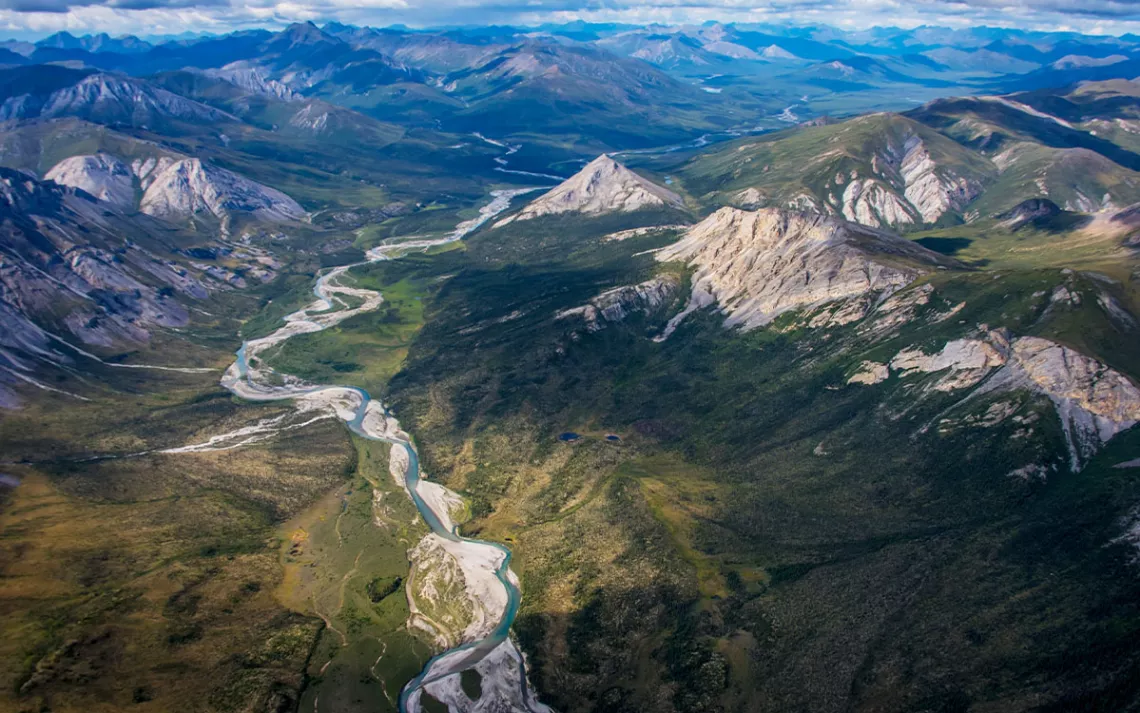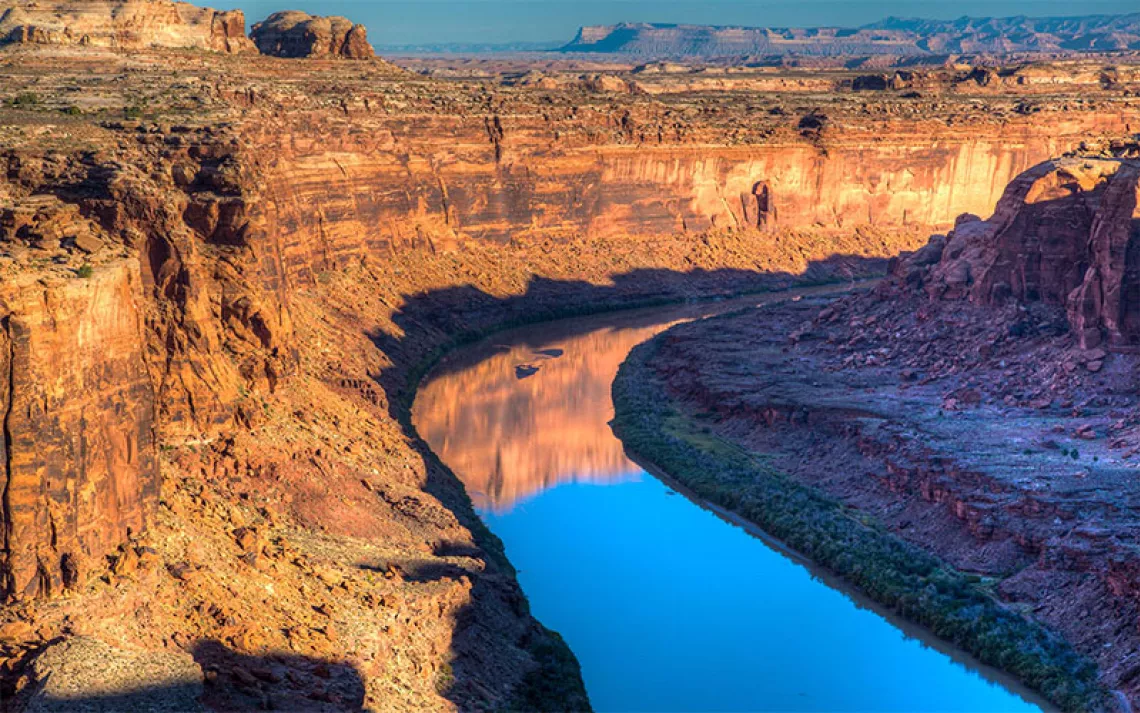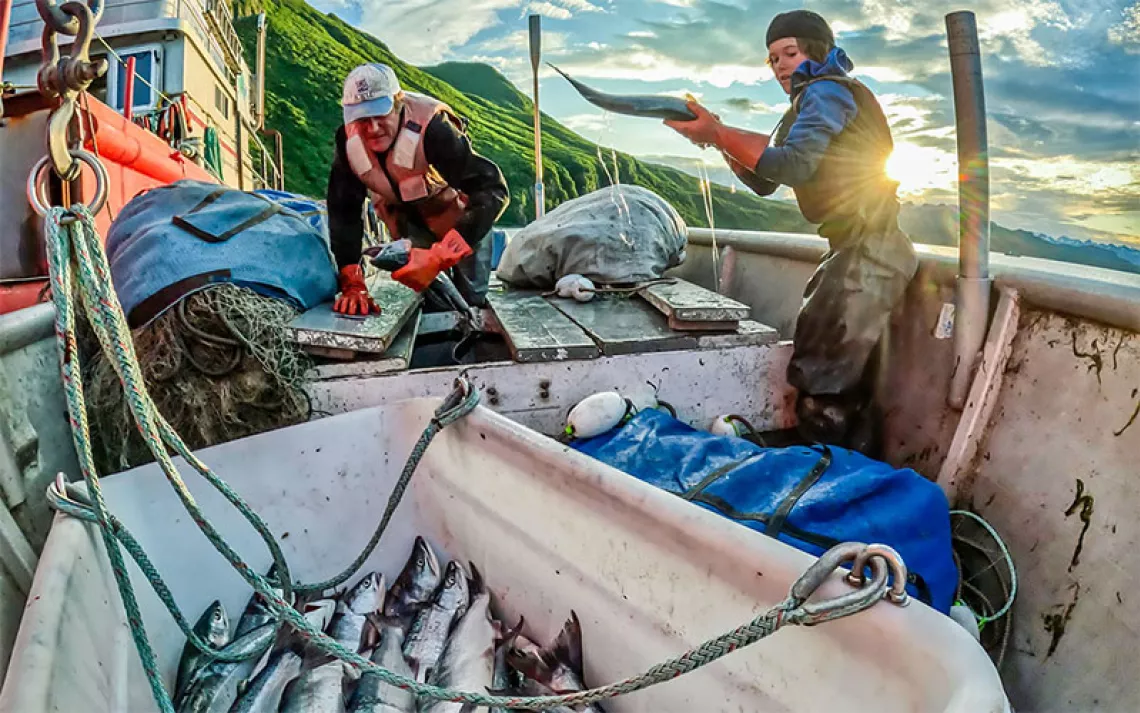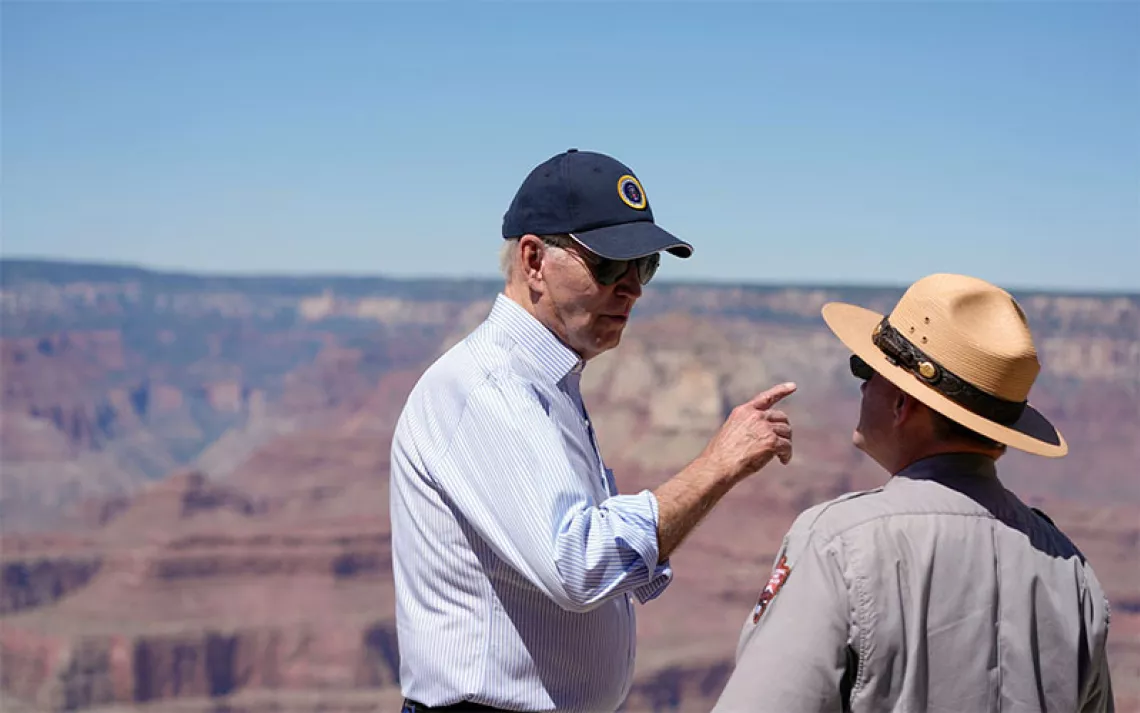Conservation Groups Say Project 2025 Would Gut Wildlife and Public Land Protections
Here's a look at how the far right plan would impact environmental regulations and conservation efforts

Brooks Range in summer, Arctic National Wildlife Refuge, Alaska. | Photo by Cathy Hart/Design Pics via Getty Images
You may have heard of Project 2025, the Far Right plan to gut the federal government. But did you know the plan would be a bonanza for the oil and gas industry? This blueprint for right-wing governance is a veritable wish list for any industry seeking to privatize public lands and ignore wildlife protections. According to the authors of Project 2025, a.k.a. Mandate for Leadership: The Conservative Promise, our public lands are for resource extraction—not people, not conservation, and certainly not for climate change mitigation.
Project 2025’s chapter on the Department of the Interior—which manages most public lands and wildlife—was written by William Perry Pendley, the same person who once opined that all public land in the West should be sold off to private investors. And the orchestrators of the document include a who’s who of associates at the Heritage Foundation, the Koch-backed think tank that advocates for the expansion of oil and gas above all else.
"Given the dire adverse national impact of Biden’s war on fossil fuels, no other initiative is as important for the DOI under a conservative president than the restoration of the department’s historic role managing the nation’s vast storehouse of hydrocarbons,” reads Pendley’s chapter. “[M]uch of which is yet to be discovered."
Consequently, conservation groups, environmentalists, and public land advocates are appalled. Project 2025 “is like [an oil-lobbyist] fever dream when it comes to public lands … and it’s really a 19th-century approach,” Athan Manuel, the director of the Sierra Club's Lands Protection Program, said.
What’s most concerning to environmentalists is how a possible authoritarian presidential administration could achieve this vision. Here’s a rundown of some of the most egregious policies in Project 2025 that could allow a future Far Right president to steal public land, undermine wildlife conservation, and hoodwink Americans into thinking privatization is what’s best for our shared natural landscape.
War on wildlife
Animals have been a unifying force in the US for decades. After all, it’s hard to resist the majesty of a buffalo, the wildness of a lynx, or the patriotic symbolism of a bald eagle. Project 2025 sets the stage to undermine decades of conservation efforts that have helped these species because, according to Pendley, "The act’s success rate ... is dismal." His proposed fix means that an untold number of “species specialists,” the people at the US Fish and Wildlife Service who know the most about wildlife, could be fired. And the entire Biological Resources Division of the US Geological Survey could be abolished.
Many provisions of the Endangered Species Act, signed into law by a Republican president, could be eliminated. Federal wildlife managers could have to include cost in listing decisions, something the original authors of the law expressly forbade. And wildlife managers at USFWS could be forbidden from reintroducing species to suitable habitats outside an animal’s current range, a crucial measure in the Anthropocene as habitats change. Critical habitat designations could also be weakened, hampering recovery efforts by allowing politically motivated interior secretaries to skirt the creation of what many species need most—a place to live.
“The Endangered Species Act has been so popular and has done such a good job of protecting species that we have not lost to extinction hundreds of species,” said Kristen Boyles, a managing attorney at Earthjustice. “Almost all species that are put on the list are actually protected and still with us here on Earth.”
Despite this, protections for grizzlies and wolves could be unilaterally wiped out with no scientific process. Politicians in some conservative states have argued that both species have recovered because they’ve met population targets. However, most researchers and legal experts say that recovery is much more than numbers. “A little island population and another island population in another state … that's not going to be recovery,” Boyles said. “Recovery is a complex biological question—it’s numbers of breeding pairs; it’s the health of the habitat; it’s continuing threats and harms.” Western states could also become the arbiters of sage grouse recovery plans, even though the species has nose-dived under state management, with populations declining on average by nearly 3 percent annually since the 1960s.
One of President Biden’s signature conservation policies, the America the Beautiful Campaign, could also be canned under Project 2025. The campaign is part of a global effort to conserve 30 percent of nature by 2030—also known by the shorthand 30x30. Pendley seems to be under the impression that this policy removes “productive uses” of public land. Jenny Rowland-Shea, the director of public lands at the Center for American Progress, says this assumption is based on misconception.
“30x30 is not just a federal land initiative. It is easements, looking at private lands. It is working with state lands,” Rowland-Shea said. “I think a lot of people think of public lands as being places where they can go hike, that are set aside for future generations, that are there to help protect clean air and water … but really, this document sees them only as a resource to be extracted and sold off to the highest bidder.”
Public land turned private
One specific clause directs a future president to review national monument designations with the intent of downsizing them. Specifically, the plan calls for reducing the Cascade-Siskiyou National Monument in Oregon and the Katahdin Woods and Waters National Monument in Maine. The ultimate objective of the plan is to abolish the Antiquities Act of 1906, the law that gives presidents the authority to designate monuments. Since President Theodore Roosevelt, nearly every president has used it to expand recreation, protect sacred sites, and enhance conservation.
Protections across cultural sites and sensitive ecosystems would also be revoked. Some high-priority areas include the Thompson Divide of the White River National Forest in Colorado, the 10-mile buffer around Chaco Culture National Historical Park in New Mexico, and the Boundary Waters Canoe Area Wilderness in northern Minnesota.
In Alaska, where oil and gas companies are eager to expand drilling, Pendley would like to see a complete revocation of President Biden’s National Petroleum Reserve protections, which seek to set aside roughly half of the Western Arctic for conservation. Under the Far Right plan, the federal government would be required to hold oil and gas sales in the Arctic National Wildlife Refuge, one of America’s last great wildernesses. And the Ambler Road project, which the Biden administration recently ruled would be too destructive, would move forward. The 211-mile road would cleave through a portion of the Gates of the Arctic National Park and Preserve and allow a mining company to tear through wildlife habitat and tribal areas. Lastly, millions of acres in the Tongass National Forest could be opened up for road building and logging.
Rewriting the rules
The plan also calls for amending the National Environmental Policy Act to favor big business. Among other provisions, NEPA requires the federal government to include the public in federal land decisions. Project 2025 directs a future administration to set page limits and arbitrary deadlines for environmental analysis, which experts say would undermine the ability to assess impacts thoroughly. The plan also encourages a future interior secretary to urge Congress to do away with judicial reviews, a key tool to hold appointees accountable.
These are just a sampling of the ideas in the public land chapter. In total, it includes dozens of actions, ranging from specific to sweeping, that a future president could take to cripple climate action, remove wildlife protections, and curtail outdoor recreation.
“Some of those suggestions are just completely unrealistic: Repealing the Antiquities Act is unlikely to go anywhere in Congress,” said Jeff Ruch, the executive director at the Public Employees for Environmental Responsibility. “The Alaskan [provisions] were the more egregious in the sense that they were more doable than a lot of the other ones, but my overall impression is that it was sort of a clueless take.”
 The Magazine of The Sierra Club
The Magazine of The Sierra Club



